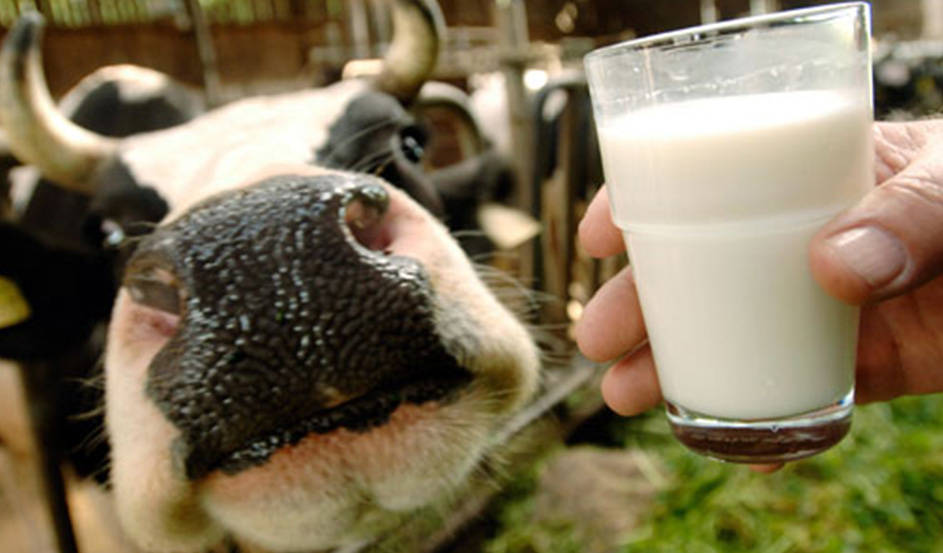
THE RAW MILK DEBATE
One of my favourite books as a child was Heidi by Johanna Spyri in 1880; the story is based in Switzerland where a young orphaned girl is taken to live with her grandfather up in the Alps.
The story is written with a tender naivety and talks about the goodness of nature, natural foods, healthy children, love and compassion through the eyes of a young girl. I remember drooling as Heidi describes drinking fresh raw goat’s milk every day (which she describes as never having drunk anything as wonderful before) and eats large chunks of cheese and dark bread that her grandfather would prepare at home. The book concludes with Heidi and her very poorly friend Clara both being nurtured back to health and happiness with thanks to the natural diet, lifestyle and the revitalising beauty of the Alps.
The story of Heidi has been ringing through my mind a lot lately. In preparation of our upcoming experimental pop-up restaurant nattura we have been investigating all aspects of our relationship with food and nature and how it has changed so drastically over the years. We recently stumbled upon a documentary on Netflix called Farmageddon which follows the story of a mother who gave up on conventional medicine and instead, used raw milk to treat the asthma and allergies suffered by one of her children.
So, naturally the questions began… What does raw milk taste of? (And is it as good as Heidi claims?) What are the health benefits? What are the dangers of drinking raw milk? Can we find it on sale in the UK?

Buying raw milk
Raw milk can be legally purchased in England from local farmers who are subject to strict controls, a great list of availability of raw milk around the world can be found here.The independent recently claimed that that the FSA recommends raw milk should be sold in vending machines. We found Emma’s dairy reasonably priced.
Taste
I loved raw cow’s milk, for some reason I didn’t expect to like it and thought it may have a meaty flavour but it was surprisingly sweet, creamy and fresh. The butterfat was not extracted which gave it a lovely creaminess but even compared to pasteurised whole milk, the flavours were more robust. We had bought a little too much milk so we turned the remaining milk into yoghurt which I wasn’t a fan of, but I seemed to be alone on that one. I will try skimming the milk and making the yoghurt again to see if I change my mind.
Health benefits
It is said that raw grass-fed animal milk has five times more cancer-fighting conjugated linoleic acid (CLA) than regular milk; it contains more omega-3 fats, as well as more beta-carotene and boosts the immune system with its natural probiotics. This is because several of milk’s natural components including beneficial bacteria, food enzymes, natural vitamins and immunoglobulins are heat-sensitive. These health-promoting components of natural, raw milk are destroyed by heating. Beta-lactoglobulin, a heat-sensitive protein in milk that is destroyed by pasteurization, increases intestinal absorption of vitamin A, so the supplemental vitamin A in conventional milk may be harder to absorb. While pasteurized milk does retain some level of nutritional value, it seems that unpasteurized milk is superior in vitamin and mineral content overall.
With that said it was found that lactose intolerant sufferers were less if not at all intolerant to raw milk. Drinking raw milk could also reduce the risk of suffering allergy-related conditions such as eczema and hay fever, this study was conducted on children.
The animals
 Farmers who supply pasteurised milk can afford to keep animals in confined spaces where the animals consume their own manure due to lack of space and are put on a diet of grains instead of grass – this is because the pasteurization process kills off most harmful bacteria’s. Most farmers who are willing to supply raw milk on the other hand do not have the luxury of covering their tracks with pasteurization so instead, they ensure that the animals are predominantly grass fed, have plenty of space to roam around in and receive ample amounts of fresh air.
Farmers who supply pasteurised milk can afford to keep animals in confined spaces where the animals consume their own manure due to lack of space and are put on a diet of grains instead of grass – this is because the pasteurization process kills off most harmful bacteria’s. Most farmers who are willing to supply raw milk on the other hand do not have the luxury of covering their tracks with pasteurization so instead, they ensure that the animals are predominantly grass fed, have plenty of space to roam around in and receive ample amounts of fresh air.
Health risks
The health risks are very rare but real nonetheless, just as foodborne illness is a concern for many types of food. A report in 2008 by the Centre for Science in the Public Interest (CSPI) showed seafood, produce and poultry were associated with the most outbreaks of foodborne illnesses. Produce is responsible for the greatest number of illnesses each year (2,062), with nearly twice as many illnesses as poultry (1,112). Dairy products are at the bottom of the list. There are only a handful of recorded deaths from pasteurized dairy products in the last decade, and there hasn’t been a single death attributed to raw fluid milk since the mid-1980s, in spite of the fact that almost 10 million people are estimated to be consuming it regularly.
It is said pathogens from raw milk, including potentially tuberculosis, diphtheria, typhoid and streptococcal infections, make it unsafe to consume. Raw, unpasteurized milk can carry dangerous bacteria such as Salmonella, E. coli, and Listeria, which are responsible for causing numerous foodborne illnesses. Symptoms of infection are like any other foodbourne illness and include vomiting, diarrhoea and flu-like symptoms
Conclusion
I am not sure the studies conducted on raw milk on either side of the argument can be considered as hard facts. The risks and the benefits both seem to make sense and anyone drinking raw milk should ensure they are making a well informed decision. From a personal perspective I would like to make an effort to substitute the majority of my milk intake with raw milk as I did notice less to no discomfort after having a full glass (I am mildly lactose intolerant). At the moment this seems to be a more realistic figure considering the cost and availability of the product. Would I give it to my toddler son? Whilst studies have shown children living on raw milk benefited the most as they suffered less allergies and asthma, I just don’t have enough confidence quite just yet and would need to test it on myself for a little longer.



Leave a Reply